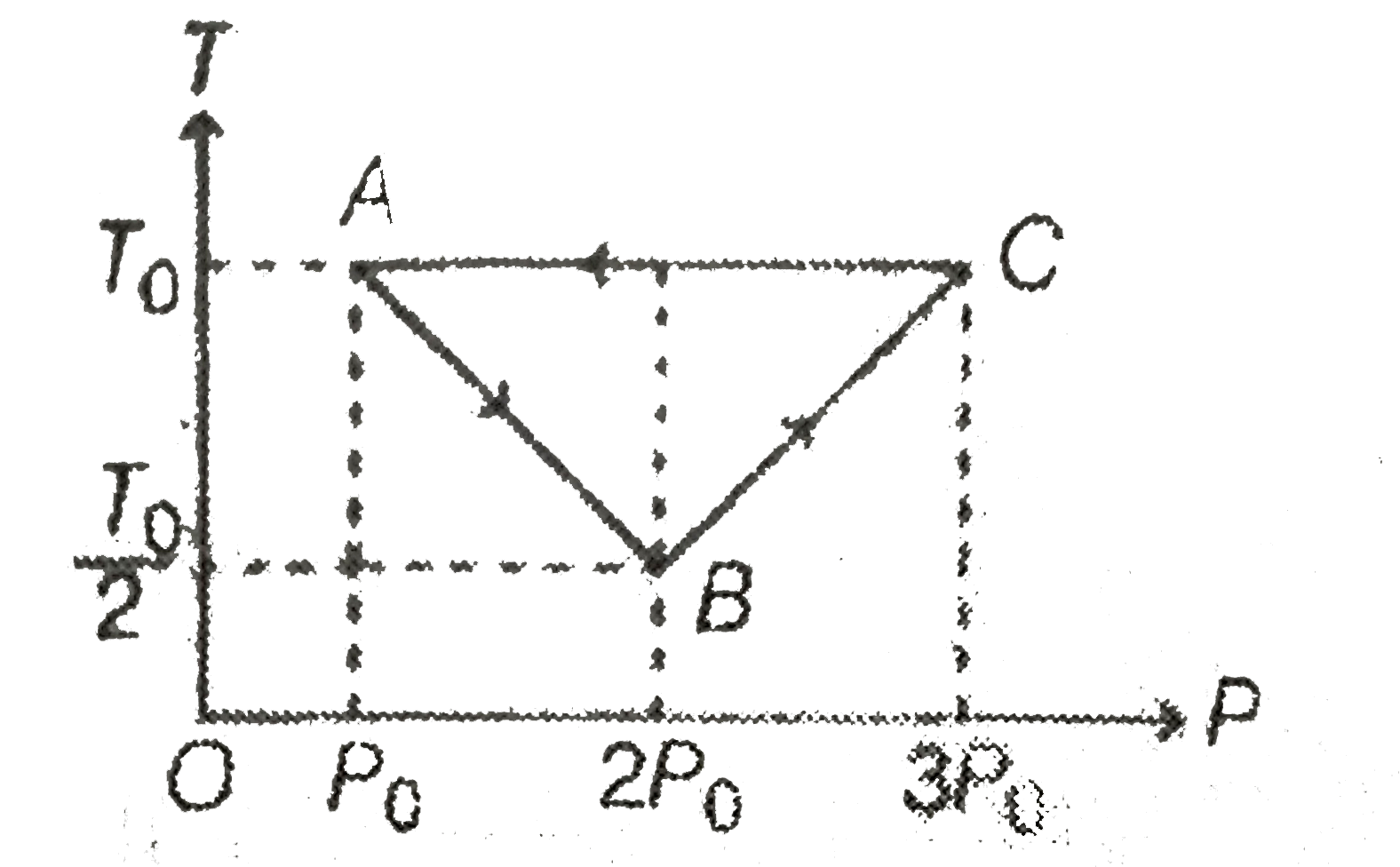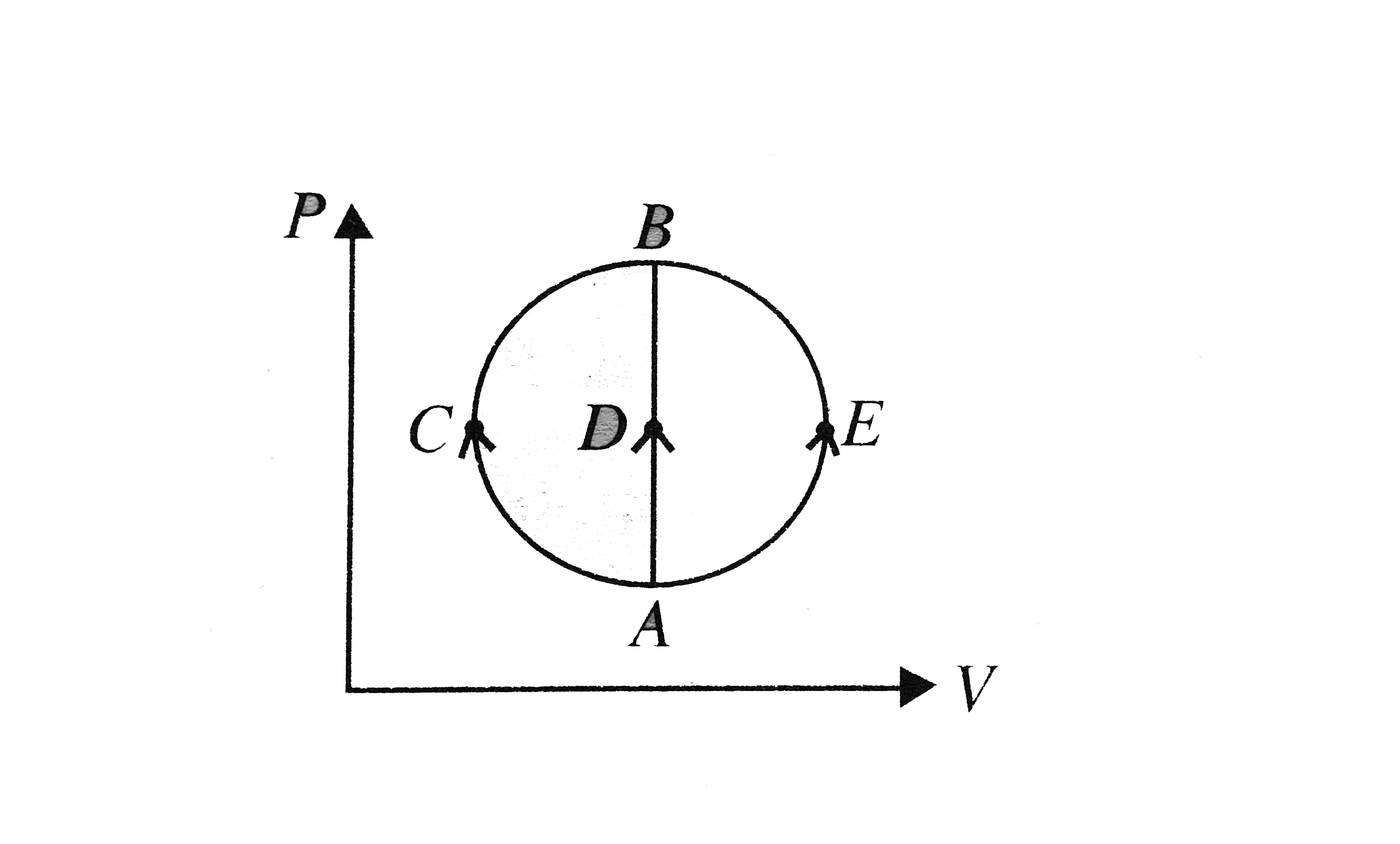One mole of an ideal monoatomic gas is taken from state A to state B through the process P=32T1/2 It is found that its temperature increases by 100 K in this process. Now it is taken from state B to C through a process for which internal energy is related to volume as U=12V1/2 Find the total work performed by the gas (in Joule) if it is given that volume at B is 100m3 and at C it is 1600m3 [Use R=8.3J/mol−K]
The correct Answer is:435
Step by step video, text & image solution for One mole of an ideal monoatomic gas is taken from state A to state B through the process P=3/2 T^(1//2) It is found that its temperature increases by 100 K in this process. Now it is taken from state B to C through a process for which internal energy is related to volume as U= 1/2 V^(1//2) Find the total work performed by the gas (in Joule) if it is given that volume at B is 100 m^(3) and at C it is 1600m^(3) [Use R= 8.3 J //mol-K] by Physics experts to help you in doubts & scoring excellent marks in Class 12 exams.
Updated on:21/07/2023Topper's Solved these Questions
Similar Questions
One mole of an ideal monoatomic gas is taken from state A to state B through the process P=32T1/2 It is found that its temperature increases by 100 K in this process. Now it is taken from state B to C through a process for which internal energy is related to volume as U=12V1/2 Find the total work performed by the gas (in Joule) if it is given that volume at B is 100m3 and at C it is 1600m3 [Use R=8.3J/mol−K]
View SolutionI mole of an ideal monoatomic gas is expanded till the temperature of the gas is doubled under the process V2T=contant. The initial temperature of the gas is 400K. In terms of R find total work done in the process.
View Solution
Knowledge Check
One mole of an ideal monoatomic gas is taken through a polytropic process P2T = constant. The heat required to increase the temperature of the gas by ΔT is
ARΔTB3RΔTC5RΔTD6RΔTOne mole of an ideal monoatomic gas is taken through a cyclic process as shown. Choose the correct option(s).
 AWork done in process CA is RT0ln3.BHeat given to the gas in process CA is RT0ln3CThe magnitude of change in internal energy in process AB and BC must be sameDThe change in internal energy in process AB is negative.
AWork done in process CA is RT0ln3.BHeat given to the gas in process CA is RT0ln3CThe magnitude of change in internal energy in process AB and BC must be sameDThe change in internal energy in process AB is negative.One mole of an ideal monoatomic gas is taken through the thermodynamic process shown in the P−V diagram. The heat supplied to the system is
 AP0V0(3+π2)BP0V0(2π−12)CP0V0(1+π)DP0V0(5+π2)
AP0V0(3+π2)BP0V0(2π−12)CP0V0(1+π)DP0V0(5+π2)
One mole of an ideal gas going from state-A to state-B through different processes. Column-I shows graph of the process and column-II shows change in parameter in these process. Match the following:

View SolutionOne mole of an ideal monoatomic gas is taken at a temperature of 300K. Its volume is doubled keeping its pressure constant. Find the change in internal energy.
View SolutionOne mole of an ideal gas is taken from state A to state B by three different processes (a) ACB, (b) ADB and (c ) AEB as shown in the P−V diagram. The heat absorbed by the gas is

View SolutionOne mole of an ideal gas is taken from state A to state B by three different processes (a) ACB, (b) ADB and (c ) AEB as shown in the P−V diagram. The heat absorbed by the gas is

View SolutionOne mole of an ideal monoatomic gas under goes a process V=aT2. The temperature of the gas increases by 100K. Which of the following is incorrect ?
View Solution
